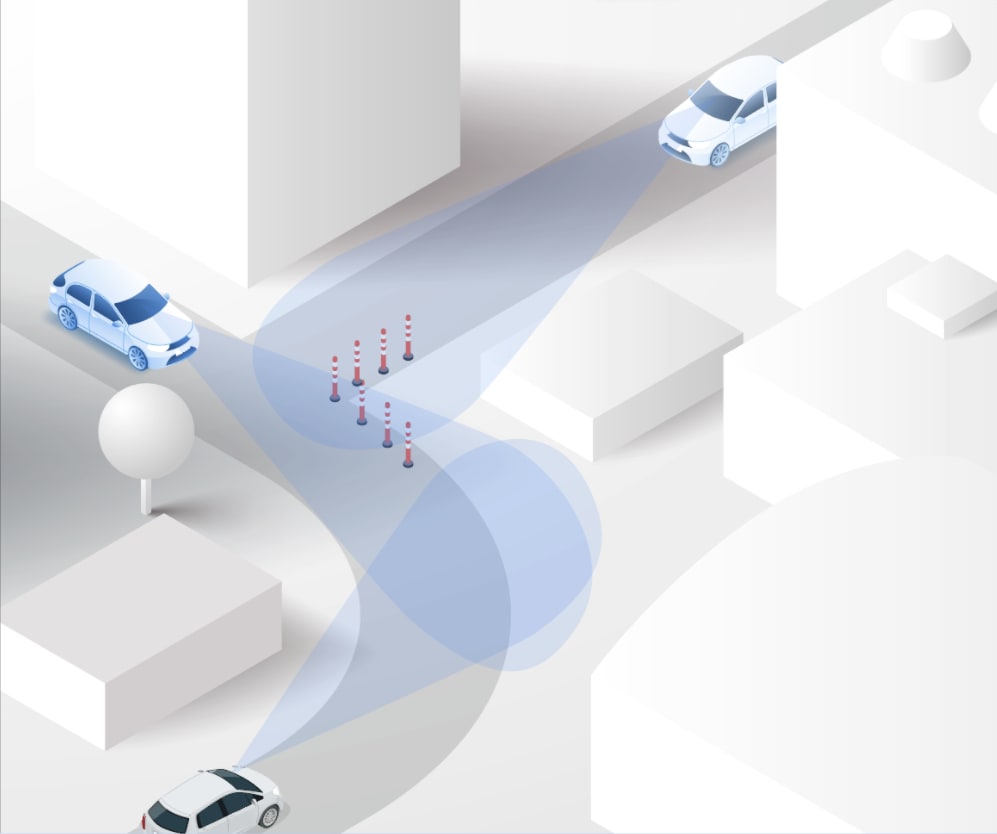Automotive Edge Model: Lessons learned from legacy V2V and V2C

AECC recently published an architecture whitepaper for mobility & connected cars - "Distributed Computing in an AECC System".
As Nexar is a part of the AECC, we’re excited to take in part in this architecture and share the highlights of this whitepaper. It addresses how the limited V2V and V2C connected car models will change, becoming this newly published Automotive Edge Tree Architecture Model.
Connected Car Communication Models Today
Over the past decade we have come to know two extremely different connected car communication models:
Vehicle to Cloud (V2C)
This model treats vehicles like any other smartphone, scaling content consumption such as entertainment, maps, news feeds and general information, just like mobile apps. However, this model has limited active vehicle networking capabilities. At most we can expect heavy ad-hoc uploads of telemetry and images, typically over wifi, and typically overnight - taking forever for every hour of driving.
Vehicle to Vehicle (V2V)
This model is based on a geospatial network that is dedicated to short range spectrum or scoped cellular domains and is used by cars to exchange real-time road information. This direct exchange is very hard to deploy in the real world. Conveying immediate basic situations is easy enough, but many times can also be detected, on its own, by an unconnected car. Sharing more advanced vision and radar information beyond line-of-sight results in a flood of heavily duplicated, possibly contradicting, poorly localized, unverified data, from different perspectives. This is too much for any given car to deal with, and especially true for data coming from anonymous sources made by competitor OEMs or unknown RSU manufacturers.
Combining Advantages and Addressing Challenges
The AECC defines a tree architecture made of: Cloud origin, Edge branches, and Vehicle leaves, addressing most of the challenges of the legacy models above:
- Quick mass data processing while being cloud native: The AECC mobile edge architecture is very much cloud native just like V2C. It's programmable and dynamically allocated, and supports FaaS delegation of any 3rd party smart processing functions to the edge branches. However, unlike V2C and generic content distribution of cloud, the AECC edge architecture is not bound to consumption, and is able to offer compute-first mass data processing of uploaded vehicle data quickly.
- Crowdsourced vehicle data can be of any format: Unlike V2V, uploads such as enumerations, radar, images - with or without AI bounding boxes - can be duplicated and very roughly localized. The tree branches’ job is to sort all this out, verify, localize, filter, reduce ,reflect, and propagate a consistent current state of the shared road. Propagation is up the tree to the cloud origin, and down to the vehicle leaves. Such software-defined propagation is typically scoped on a need to know basis.
- Replacing rigid V2V with open upload parsing: The model can efficiently bring on-board new sensors to convey data, a custom parser can be easily matched to the vast variety of vehicles. Other vehicles' ability to use this data is streamlined and simplified without waiting for new standardization to cast all data to same mold or new processing components to make sense of anything and everything. The basic scooter, and the most sensor-equipped luxury vehicles, can easily fit in without the need to consolidate points of view.
- Deploy over multiple mobile, edge or cloud providers: The tree architecture addresses a wide range of use-cases. Just like V2C, this model can handle crowd-sourced map data collection of persistent change detections- such as lanes and traffic signs; just like V2V, it can easily address any transient geospatial events like slow-downs, blockages, hazards, parking or any other intelligent driving assists. Unlike V2V or V2C, this model can easily handle the spectrum in between such as current traffic light cycles. The only factor that determines these use cases is the latency and capacity of the mobile mobility network.
The Nexar Angle
Over the past couple of years Nexar, along with Cisco, and UPC have worked to standardize the key vehicle edge interface based on interoperable IETF RFCs. The IETF lisp-Nexagon interface virtualizes geospatial networks into virtual tiles hosted at the edge, which is part of the tree architecture.
This model has been deployed in Nexar since day one. Our hundreds of thousands of dash cams are a primary source of real-time street level content, addressing mapping, safety, city needs, fleet and highway management.
Together with the AECC we continue to work on proper layering of the tree architecture to enable dynamic geo-location, seamless vehicle context switching and geo-privacy protection. These constructs are matched and demonstrated for the Mapping, Driving, and Insurance use-cases addressed by AECC, applied in collaboration with AECC companies such as Dell, Toyota, Intel, Ericsson, Oracle and NTT, and demonstrated in a POC with KDDI.


